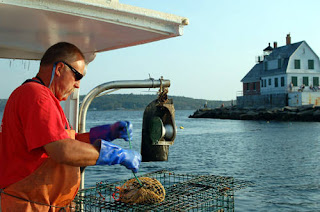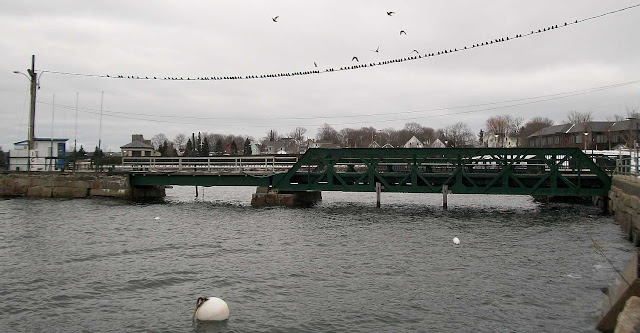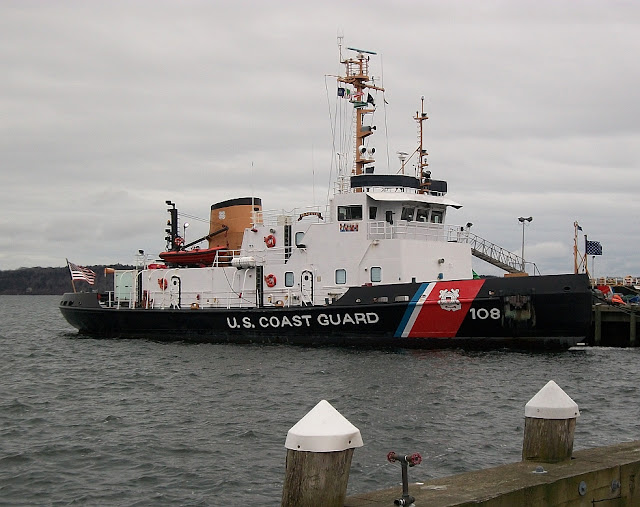The federal decision to fast-track the siting of ocean windmills off the US mid Atlantic and New England coasts ("
Smart from the Start") risks leaving many environmental issues that could affect the future of Maine fisheries environment unexplored until
irretrievable commitments are made
.

To make things worse, New England Fishery Management Council, which has been spending years developing Essential Fish Habitat protection in these same waters, has
washed its hands of the issue and will not represent the commercial fishermen's interests in the federal ocean wind process.
Organizations like CLF, NRCM & Environment Maine too, are doing nobody any good.
Their uncritical endorsement of the Obama Adminstration's decision to weaken marine environmental laws in order to "expedite" the leasing and permitting of offshore windpower extraction, runs counter to their own mission statements of conserving Maine's and the Gulf of Maine's living marine resources.
CLF should know better; the latter two organizations have very little experience with ocean conservation issues Both of them, however also vigorously supported weakening of Maine's land conservation laws, in order to "expedite" the permitting and licensing of mountaintops for windpower extraction by large absentee energy companies. Unsurprisingly, all three organizations take money from the wind power industry
All three ENGOs have fallen prey to an end-justifies-the-means philosophy which holds that the Carbon Crisis requires we literally destroy our villages locally to save them globally. A noble sentiment; but one not necessarily shared by a majority of the villagers whose lives and livelihoods they so blithely propose to alter. they so blithely
For a windrush is ON. Windfarm-able ocean zones are proposed from Maine, in the path of the Eastern Maine Coastal Current, and all the way down the Atlantic coast to Florida, where the Gulf Stream itself may be affected as it passes through vast ocean windfarms planned off along the south Atlantic and midAtlantic coasts.
We know
ocean windmills generate fogbanks. We also
know that something happens to ocean hydrology when all that energy is diverted away from the intended
Ekman Transport into the water column - the force that puts windpower into the ocean, but we aren't surewhow much.
But the stakes are large For instance, one of the areas proposed for ocean windfarming off Maine is i
n the route of a current that transports lobster larvae from waters off Lubec south to Penobscot Bay.
Will diverting any of that current east into the Gulf of Maine's deep basins take a lot of larvae with it? NRCM, Environment Maine and other groups need to look before they blindly leap onboard the federal offshore windrush.
We've seen the results when other newly exploited marine resources get piled on by everyone who can afford to be out there. Unless other states follow Maine's lead of promoting
floating deepwater windmills, well offshore, states will find it impossible to reposition ocean windfarms if they are found later to destabilize the Atlantic coast's currents.
Natural Resources Council of Maine, Environment Maine and other land conservation groups groups should proceed with caution when entering ocean wind energy policy issues.
BACKGROUND
* On the influence of large wind farms on the upper ocean circulation Göran Broström, NMI
Another Brostrom piece summarizing the first one.
Merete B. Christiansen and Charlotte B. Hasager, Risoe National Laboratory, Denmark
Excerpt: "Wake effects were observed for downstream distances of 5-20 km, depending on the ambient wind speed, the atmospheric stability and the fraction of turbines operating during SAR data acquisitions."
*
Wind power could alter currents: Discovery News story















































